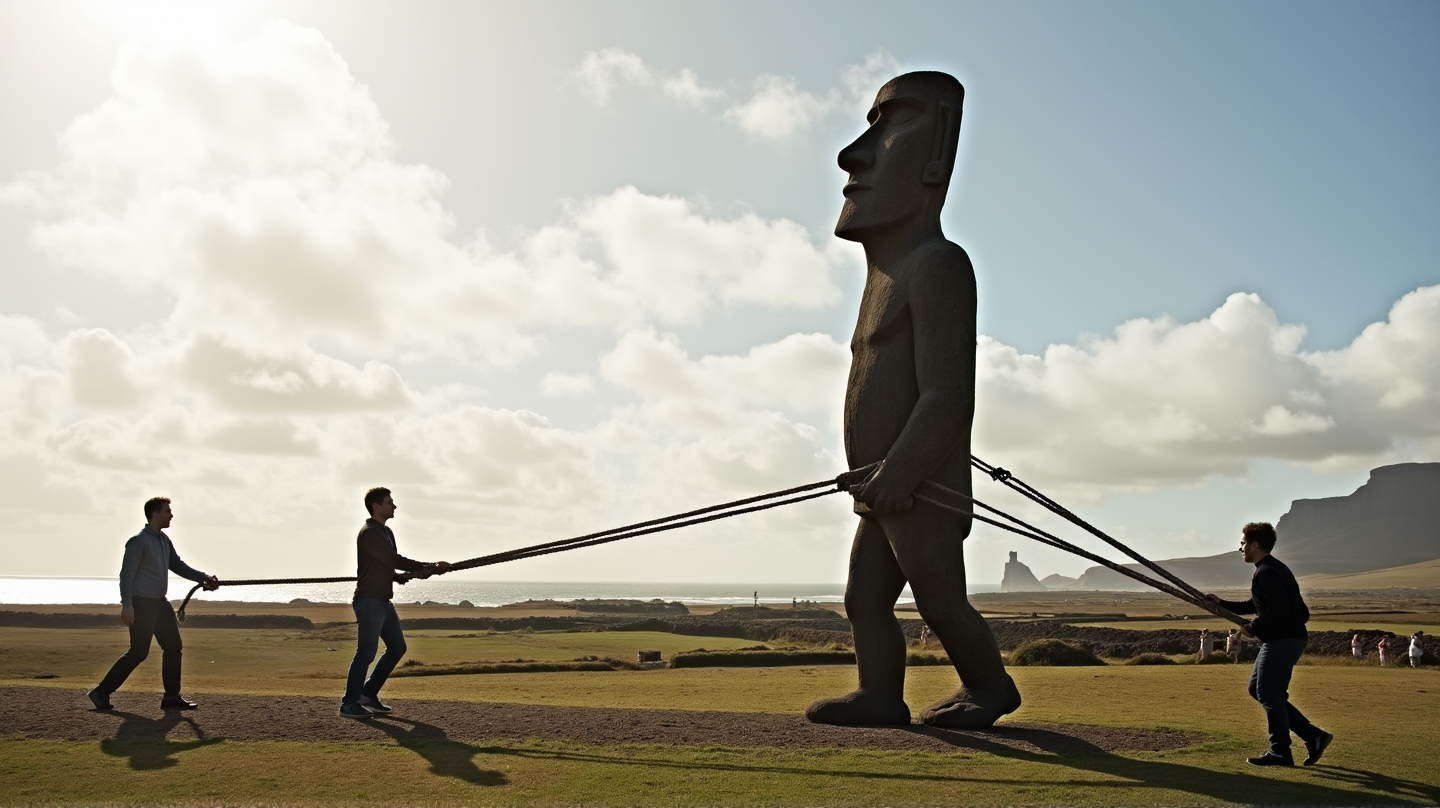The enigmatic and enduring moai statues of Rapa Nui, commonly known as Easter Island, have long captivated scholars and adventurers alike. Standing as silent sentinels against the vast Pacific, these massive figures have carried within them secrets of engineering that are only now being unraveled. Recent research led by a team from Binghamton University in collaboration with the University of Arizona has illuminated one of the most fascinating aspects of these statues—the seeming ability to ‘walk’.
Bridging Past and Present: Modern Science Meets Ancestral Ingenuity
For years, the method by which these towering figures traversed the island remained one of archaeology’s greatest mysteries. Piecing together the evidence like a detective unraveling an ancient riddle, researchers have utilized modern tools such as 3D modeling and physics alongside practical field experiments. What they discovered was the ingenious use of a rocking, zig-zagging motion. In a scenario reminiscent of the legends, these statues, with their imposing size and weight, could indeed be ‘walked’ with just a few people and strategic use of ropes.
The Role of Road Design
Central to this discovery were the uniquely designed pathways on Rapa Nui. Professor Carl Lipo from Binghamton University emphasizes the integral nature of these roads in moving the statues. With a distinct concave cross-section, the roads provided stability and direction, transforming the act of moving these colossal figures from sheer speculation to proven possibility. According to ScienceDaily, this innovation reflects the vast engineering prowess of the Rapa Nui people, showcasing that their culture was as sophisticated as it was mysterious.
Putting Theories to the Test
The proof of this hypothesis came through a remarkable experiment. A replica moai statue, weighing over four tons and crafted with the authentic forward-lean design, was successfully maneuvered across a distance using only 18 people. This experiment echoed the ancient movements across the island, offering a tangible glimpse into a once-hidden chapter of human history.
Celebrating Engineering Prowess of the Past
The findings honor the innovative spirit of the Rapa Nui people, who managed to overcome the limitations of their environment to erect and transport these statues, leaving a legacy that withstands modern scrutiny. As Professor Lipo points out, the ancestral lessons embodied in these feats offer inspiration and admiration for a people who thrived with limited resources yet abundant ingenuity.
Personal Reflections and Wider Implications
Perhaps the most evocative aspect of this research is the way it connects us with a time and place far removed from our present, reminding us of the universal drive to create, explore, and understand. As stated in ScienceDaily, gaining insights into such mysteries inspires appreciation for human ingenuity across all ages, inviting us to question, learn, and honor the legacy left by those who walked before us.
With these revelations, the moai statues continue to stand not only as relics of a distant past but as active participants in a dialogue across time, inviting curiosity, awe, and respect for the legacy of a remarkable civilization.
